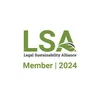A guide to trade mark revocation for legacy brands

Over time, registered trade marks can be revoked if they aren’t used. Here’s a quick guide to the reasons behind trade mark revocation and what you must do to ensure that your legacy marks remain active and your registrations valid.
What the law says about revoking trade marks #
Let’s start with the legal provision behind any act of revocation. Section 46 of the UK Trade Marks Act 1994 (the Act) states that a trade mark registration may be revoked if, within the period of five years following the date of completion of the registration procedure (or for any uninterrupted period of five years), it has not been put to genuine use in the UK by the proprietor or with their consent, in relation to the goods or services for which it’s registered — and that there are no proper reasons for non-use.
This provision exists to prevent the register becoming congested with marks that are no longer used. While it’s possible for registered proprietors to surrender their registrations for marks they’re no longer interested in, in practice this hardly ever happens. Consequently, this section of the Act is usually invoked by third parties looking to clear the way for new brands.
The problem with trade mark revocation #
However, some of our favourite brands live on in our memories long after the products have stopped being available. In these exceptional circumstances, it seems unfair that in the absence of sales an unrelated party should be able to adopt or revive these brands.
So, how much use is required to maintain a registration? What type of use is important? And can trade mark owners continue to enforce their rights once sales stop?
Here are five scenarios in which trade mark registrations have been revoked and what action, if any, could have been taken to prevent revocation.
Logo evolution #
Brands that have been in existence for some time will evolve their logo over time in-line with trends and cultural changes. For some, this can be gradual; for others, more dramatic step changes take place.
The key question here is: does use of the new logo count as use of the registered mark, or does every logo change need a new application to protect it?
The Act allows for some changes — the use of a trade mark in a “form differing in elements which do not alter the distinctive character of the mark in the form in which it was registered” will count as genuine use. However, what constitutes “elements which alter the distinctive character” might only be tested when it comes to enforcing a registration, by which point it may be too late to file a new application to cover the evolved logo.
Therefore, it’s always advisable to check in with your trade mark attorney when a rebrand is being considered to ensure that you’ll remain protected when your branding is updated.
Discontinued product #
Some products simply fall out of favour and use ceases. The British credit card brand Access, launched by three high street banks in 1972, is one such example. In 1996 it was bought out and superseded by MasterCard. There are still live trade mark registrations covering the UK, but the registrations for its famous slogan “Your Flexible Friend” have all lapsed through the non-payment of renewals.
Given the length of period without use, it’s likely that the registrations would be cancelled if challenged, unless sufficient goodwill in the brand can be proven. One source could well be a long-running fan site which rightly states “You could be forgiven for sometimes thinking that it is still with us”. However, without any use, it would be difficult to maintain the registrations in the face of a challenge.
Technology emerges #
When new technology emerges, there is often collateral damage to brands that simply don’t keep up with the change — the likes of Betamax, Blackberry and Blockbuster all come to mind. The video store lost out in the shift to online streaming in 2014 and today only one store in the USA remains open.
In the absence of a challenge, the Blockbuster registrations covering the UK will remain on the register until 2027. It’s hard to imagine that a third party would want to resurrect a video rental brand, but in the unlikely event that they did, they may well be able to cancel the registrations to clear the way for a new interpretation of the brand.
Retail landscape shifts #
Even before the COVID-19 pandemic, the UK high street was struggling. Many stalwart brands that had been around for decades were starting to disappear from their bricks and mortar roots. Recent months have seen many more fall by the wayside. With the value of retail property falling, the residual value in these brands is down to their intellectual property.
In some cases, brands have been snapped up by investors, as when BooHoo bought Karen Millen, Coast, Warehouse and Oasis. It isn’t clear if the entire business has been absorbed in each case, or simply the IP has been purchased — however, at least in the case of Oasis, no assignment of the UK trade mark registrations has been recorded.
The rush to acquire brands before companies are wound-up can mean that actual the transfer of ownership is forgotten. Ultimately, this can mean that a trade mark isn‘t being used “by the registered proprietor or with their consent”. If the original proprietor is no longer around to confirm consent, the once-valuable brand could become vulnerable to cancellation. Recording the correct chain of title in transactions is vital.
Harmonisation #
Since the 1990s we have seen a worldwide harmonisation of brands. Driven by economies of scale and the global online marketplace, conglomerates have ceased using different brands for the same products in different countries and gradually merged them into one. As long as the marks that are selected translate into all relevant languages without causing confusion or offence, this seems sensible. Successful examples of this are when the moisturiser Oil of Ulan and Oil of Ulay became Olay, cleaning product JIF became CIF and Coco Pops became Choco Krispies before reverting back to Coco Pops.
How to prevent your trade marks being revoked #
If you don’t want to risk the revocation of a mark, you must take one of the following actions.
Make use of it #
According to case law, there is genuine use of a mark where it’s used in accordance with its “essential function”, which is to guarantee the identity of the origin of the goods or services for which it was registered, in order to create or preserve an outlet for those goods or services.
Genuine use doesn’t include token use for the sole purpose of preserving the rights conferred by the mark, but does include minimal use, as long as it’s deemed to be justified in the economic sector concerned for the purpose of creating or preserving market share for the relevant goods or services. There is no de minimis rule (Ansul BV v Ajax Brandbeveiliging BV [2003] ECR I-2439 – “Ansul”).
Whether intentional or not, the actions of confectionary brand Mars Wrigley Confectionery UK Limited are a good example of how to maintain a trade mark registration. Opal Fruits were first launched in 1960, but in 1998 the name was changed to Starburst to match what they were called in the US. The UK trade mark registrations were, however, retained. In March 2020, Opal Fruits made a temporary but genuine return when they were made available again for a short time at five major retailers. Mars also did the same with the chocolate bar Marathon. In 1990, the household favorite became known as SNICKERS so that it had the same name globally, but again, the UK registrations were maintained by periodic use, such as the special edition that was brought back for three months in 2019 to celebrate over 85 years of Mars making chocolate in the UK.
Last month’s decision by the CJEU in respect of the Testarossa trade mark has given additional guidance on the issue of genuine use and, in particular, the use of spare parts. Italian car manufacturer Ferrari argued successfully that although sales under the trade mark had stopped, they were using the mark in respect of replacement and accessory parts, as well as for the resale of used vehicles and that this constitutes genuine use within the Ansul definition.
The case made the following points:
- The fact that a mark isn’t used for goods newly available on the market can be genuine use, provided the proprietor makes actual use for parts that are integral to the make-up or structure of the goods, or for goods or services directly connected with the goods previously sold and intended to meet the needs of customers.
- A trade mark proprietor doesn’t have to use the trade mark they’ve registered in every market segment covered by the class of goods for which the mark is registered. In other words, use in respect of ‘very high-priced luxury sports cars’ constituted use in respect of ‘motor cars and parts thereof’.
- In respect of ‘very high-priced’ goods, a relatively low number of goods sold under the relevant trade mark can constitute use of a mark.
Consider alternatives #
The common law tort of passing-off protects the goodwill acquired in various elements of a brand. The requirements to create a passing-off right are well established. They are (a) goodwill in a business, (b) a misrepresentation (intentional or otherwise) which is liable to deceive a substantial number of customers or potential customers, and (c) resulting damage to goodwill.
As this is a common law action, rather than a legislative one, the courts are usually more flexible in their interpretation and application. As such, it may be easier to show actionable goodwill than genuine use.
Most passing-off cases concern an ongoing business, but it has also been established that goodwill can survive and be protected for some time after a business ceases to trade [1]. In Sutherland and others v. V2 Music Ltd [2] case, Laddie J had to consider whether 1980’s R&B group LIBERTY still had goodwill sufficient to prevent PopStars’ reality tv show runners-up from calling themselves the same name. The judge stated that the test for enduring goodwill required the answer to these questions: “How big was the reputation when use stopped? How lasting in the public eye are the goods or services to which the mark is applied? How, if at all, has the person asserting the existence of the goodwill acted in order to keep the reputation in the public eye?” He added, “the greater each of these elements is, the longer, it seems to me, it will take for any goodwill to dissipate”. The modest but continuing goodwill in the ‘original’ group’s name is what forced the PopStars group to become Liberty X.
It’s important to note that passing-off requires ‘goodwill’, not ‘reputation’. Even if direct sales have ceased, customers must have purchased goods or services offered under the trade mark in the UK. Use exclusively in a different jurisdiction may well mean that a brand has a reputation and even qualifies for protection as a ‘well-known’ mark. However, it will not be sufficient for goodwill passing-off proceedings.
Re-file it #
Porsche recently lost design protection for its 911 model. Registered designs are required to have novelty and the small changes made since the original model in 1967 weren’t considered sufficient to warrant an extension to the protection. However, the same doesn’t apply to trade marks. For evolving logos, rather than risking reliance on a potentially vulnerable registration for an out of date version and having to argue that the changes haven’t affected the distinctive character, you might be better off filing applications to protect the newer version. This should be done at least every few iterations or five years, whichever is soonest.
It’s important to note that an applicant for a UK trade mark registration is required to have an intention to use the mark. Re-filing for obsolete trade marks simply to maintain a registration on the register is unlikely to constitute a valid intention, so re-filing for the sake of it may not be a sensible strategy.
Essentially, if your brand is valuable, you have to use it or lose it.
Get in touch
Depending on why your registration may become vulnerable to cancellation, there are various options to maintain the protection of your brand.
If your brand has changed or if you’re considering a change, get in touch for expert, tailored advice.




















